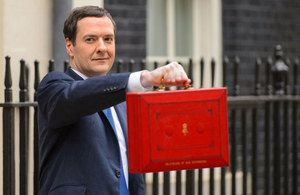In his first Budget on 8th March, the new Chancellor Phillip Hammond announced that he would level the playing field between employees and the self-employed by increasing Class 4 National Insurance Contributions (NICs) from 9% to 10% from 6 April 2018 and then to 11% from 6 April 2019. His justification is that the self-employed are now entitled to more generous state benefits than in the past and thus NIC rate should be increased towards the 12% Class 1 NIC employee rate.
Note that the flat rate Class 2 NIC contributions, currently £2.80 a week, cease on 5 April 2018.
The chancellor stated that only the self-employed with profits in excess of £16,250 will pay more national insurance.
The Chancellor also announced measures to limit the rise in tax-driven incorporation. The £5,000 tax free dividend allowance introduced by George Osborne will be reduced to just £2,000 from 6 April 2018. Mr Hammond claimed that many smaller owner-managed businesses have incorporated as limited companies mainly for tax reasons. Typically the director/shareholders of such businesses have paid themselves in dividends and paid less tax than similar unincorporated businesses.
Currently, once the dividend allowance has been used the remaining dividends are taxed at 7.5%, 32.5% and then 38.1% depending upon whether the dividends fall into the basic rate band, higher rate band or the additional rate. There are rumours that these dividend rates may also be increased in future years.
Although the cut in the tax-free dividend allowance is clearly aimed at owner managed companies, it will also impact on those with substantial share portfolios. Mr Hammond reminded us in his speech that the annual ISA investment limit increases to £20,000 from 6 April 2017 and that dividends on shares held within an ISA continue to be tax free.
The Government is committed to the "Making Tax Digital" (MTD) project which is scheduled to start in April 2018 with the first quarterly updates being submitted by the self-employed and property landlords in July 2018.
Many business owners, professional advisors and the Treasury select committee had
expressed concerns about the timescale for the introduction of MTD. The Chancellor announced that there will be a one year deferral in the start date to 2019 for self-employed businesses and property landlords with gross income below the VAT registration limit.
Contact us if you need more information or business help:
APJ Accountancy | ☎ 020 89310165 | ☏ 07900537459 | ✉ info@apjaccountancy.com
Note that the flat rate Class 2 NIC contributions, currently £2.80 a week, cease on 5 April 2018.
The chancellor stated that only the self-employed with profits in excess of £16,250 will pay more national insurance.
Tax Free Dividend Allowance To Be Reduced To £2,000
The Chancellor also announced measures to limit the rise in tax-driven incorporation. The £5,000 tax free dividend allowance introduced by George Osborne will be reduced to just £2,000 from 6 April 2018. Mr Hammond claimed that many smaller owner-managed businesses have incorporated as limited companies mainly for tax reasons. Typically the director/shareholders of such businesses have paid themselves in dividends and paid less tax than similar unincorporated businesses.
Currently, once the dividend allowance has been used the remaining dividends are taxed at 7.5%, 32.5% and then 38.1% depending upon whether the dividends fall into the basic rate band, higher rate band or the additional rate. There are rumours that these dividend rates may also be increased in future years.
Although the cut in the tax-free dividend allowance is clearly aimed at owner managed companies, it will also impact on those with substantial share portfolios. Mr Hammond reminded us in his speech that the annual ISA investment limit increases to £20,000 from 6 April 2017 and that dividends on shares held within an ISA continue to be tax free.
Start Of Digital Reporting Delayed For Smaller Businesses
The Government is committed to the "Making Tax Digital" (MTD) project which is scheduled to start in April 2018 with the first quarterly updates being submitted by the self-employed and property landlords in July 2018.
Many business owners, professional advisors and the Treasury select committee had
expressed concerns about the timescale for the introduction of MTD. The Chancellor announced that there will be a one year deferral in the start date to 2019 for self-employed businesses and property landlords with gross income below the VAT registration limit.
Contact us if you need more information or business help:
APJ Accountancy | ☎ 020 89310165 | ☏ 07900537459 | ✉ info@apjaccountancy.com











